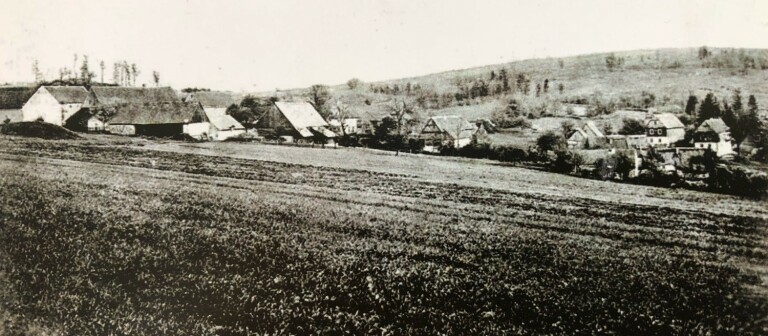
Němčí
The following text is taken from the file "Notes on the design of the municipal emblem and flag," which was prepared for the municipality of Malečov in 2020 by Stanislav Kasík for the Heraldic Office "Dauphin" in Roudnice nad Labem. Published with the permission of the author and the municipality of Malečov.
The village of Němčí is first mentioned in written historical sources in court records from 1499, in the records of ransoms from King Vladislav II for officially declared deaths. After the death of Mikuláš of Sebuzín, Václav of Kolovrat obtained the Libochovany estate, which he later ceded to Vojtěch Tvoch of Nedvídkov. In the extensive description of the Libochovany estate and payments from various villages, a payment from the village of Němčí ("Němčieho"; AČ I., 1840, p. 357) is mentioned. A peasant farm with fields in Němčí was still part of Libochovany in 1542 (Profous III., 1951, p. 198). In 1638, Němčí was part of the Lovosice estate, which was inherited by the sons of Adam of Wallenstein († 1638). On November 25, 1638, the estate was divided among them, and Lovosice, along with its dependencies, including Němčí ("Niemcži"; Sedláček, Hrady XIV, 1927, p. 389), was allocated to Charles Ferdinand of Wallenstein. From then on, Němčí remained permanently part of the Lovosice estate.
In 1787, Němčí ("Nemschen") belonged to the allodial estate of Lovosice, owned by Jan Prokop, Prince of Schwarzenberg. The village consisted of 19 houses, part of which belonged to Záhořany and part to Trmice (Schaller, V., 1787, p. 92).
In 1833, Němčí ("Nembschen", "Nemtschen", "Nemčen") belonged to the allodial estate of Lovosice (including the farms Boreč and Vchynice), which was owned by Josef Jan Nepomucký Anton Karel, Prince of Schwarzenberg, Duke of Krumlov. The village had 19 houses with 109 inhabitants. Of these, 6 houses and 34 inhabitants belonged to Lovosice, while the rest were part of the Velké Žernoseky estate (Count Nostitz-Rieneck) and Záhořany (to Ploskovice – Archduke Ferdinand I, Grand Duke of Tuscany). The village was annexed to Proboštov (Church of St. John the Baptist; Sommer, I., 1833, p. 102).
In 1848, Němčí ("Nemschen") was part of the Lovosice estate, along with the estates of Boreč and Vchynice, owned by Jan Adolf, Prince of Schwarzenberg. The village consisted of 19 houses with 114 inhabitants (Palacký, Description, 1848, p. 48).
Otto's Encyclopedia provides an account of Němčí from 1890. The village had 21 houses and 98 inhabitants, and there was a chapel. The village belonged to the administrative and political district of Ústí nad Labem and was affiliated with Proboštov (Church of St. John the Baptist; OSN, XVIII., 1902, p. 65).
The name Němčí is derived from the adjective "Němeč" or "Němče," meaning "Němcův" (belonging to Němec), which likely refers to a farmstead. Regarding the German version of the name ("Nembschen"), it is noted that in the Germanized region, the name "Němčí" underwent significant changes (Profous, III., 1951, p. 198).
Photo Documentation
The published photographs are protected by copyright. If you are interested in downloading them, please contact us at info@malecovskyrozhled.cz. The photographs come from private archives, Petr Špaček’s book "How It Was in Ústí nad Labem 2," and especially from the archives of the Ústí nad Labem City Museum. ![]()









